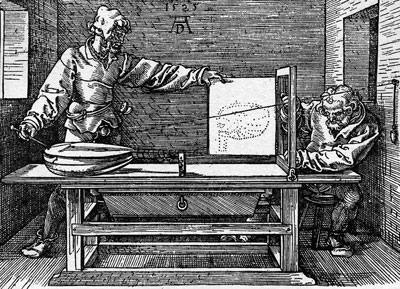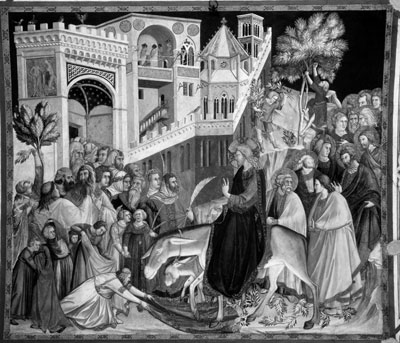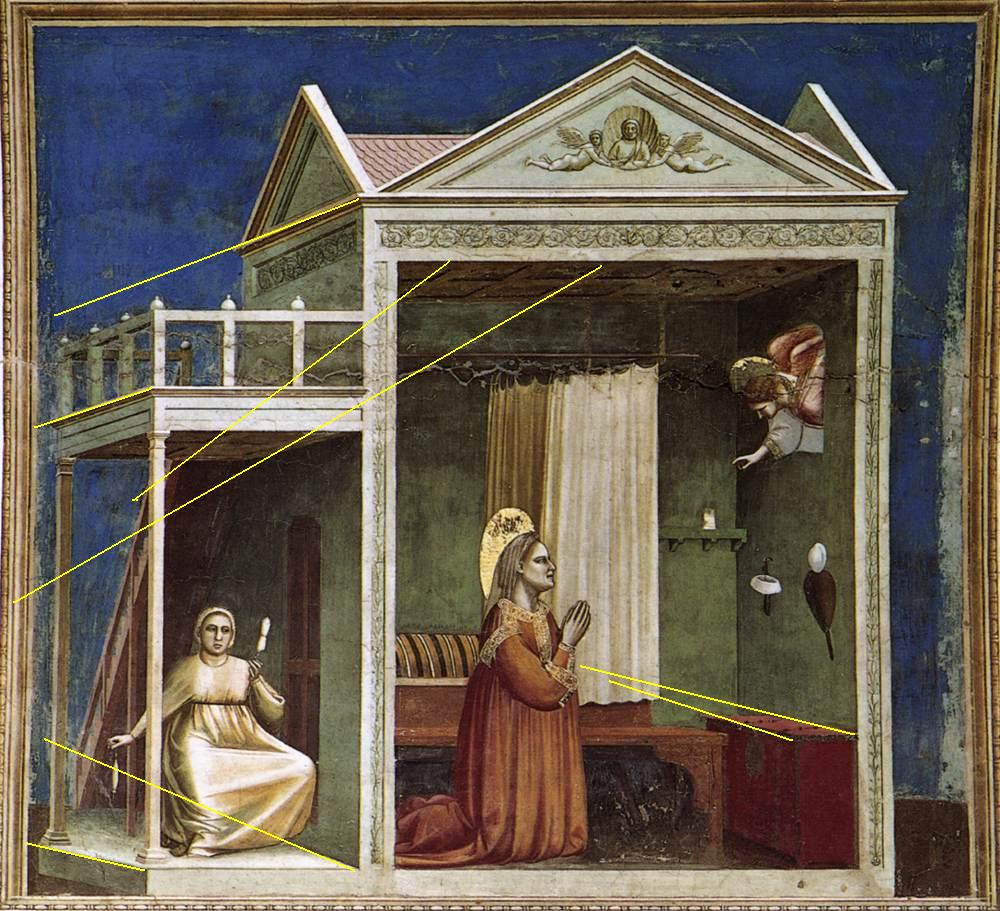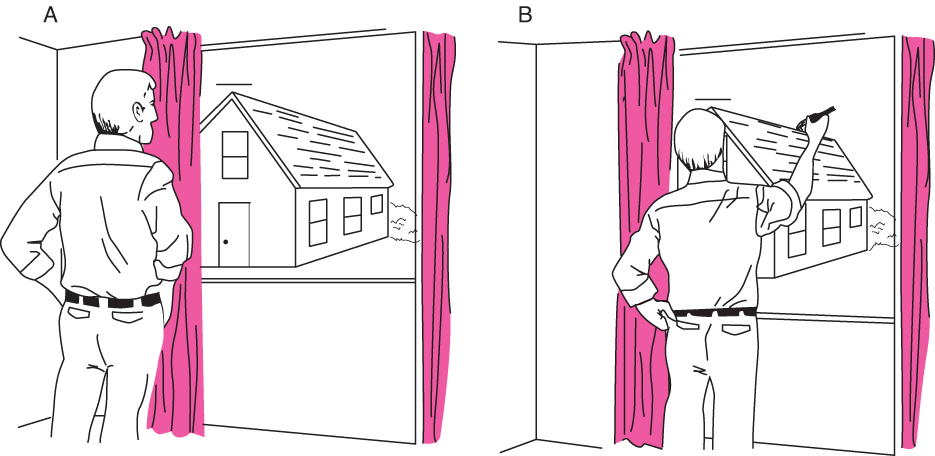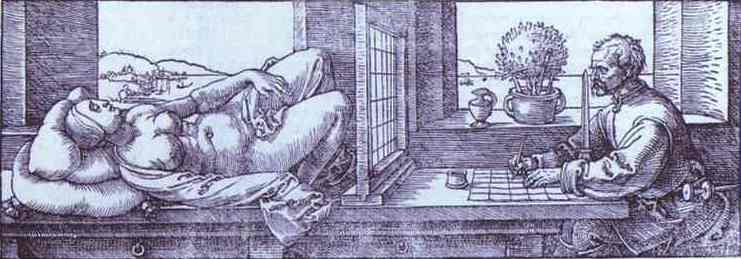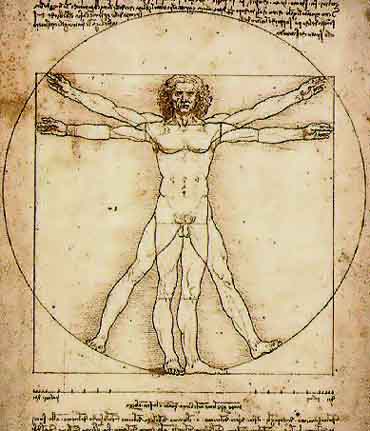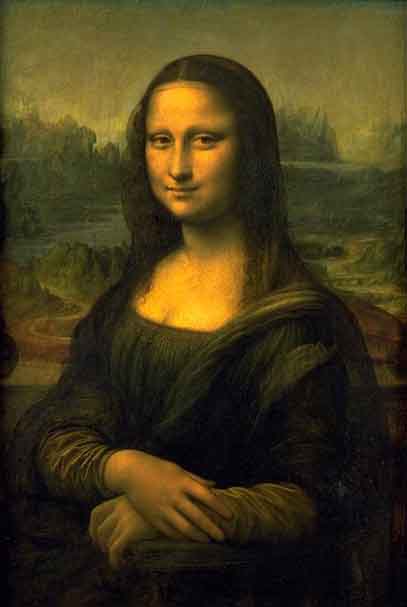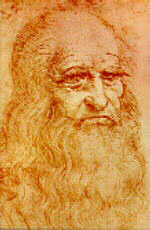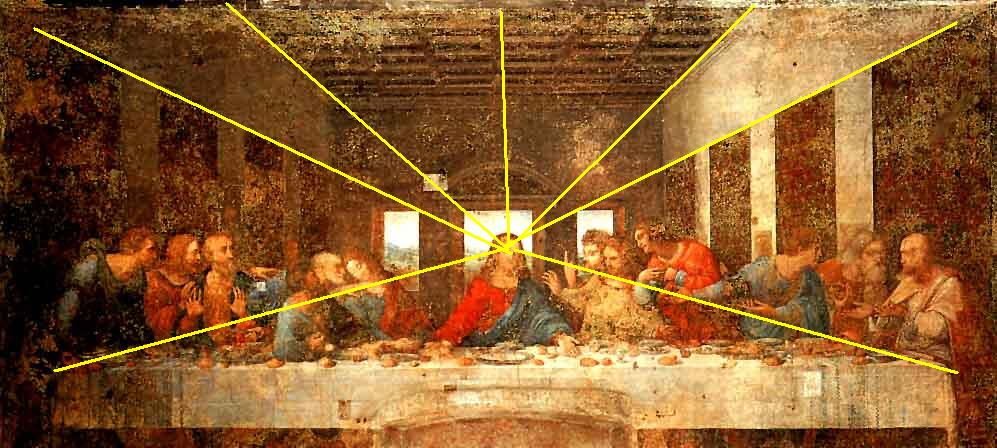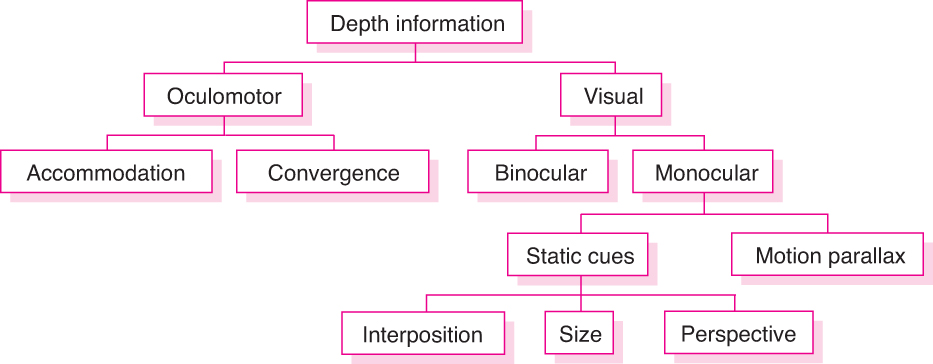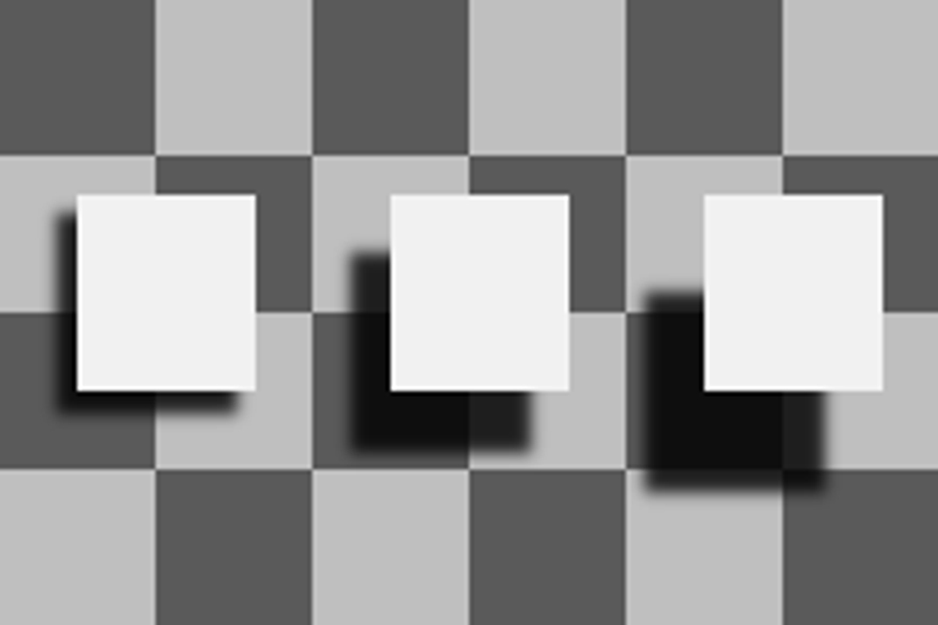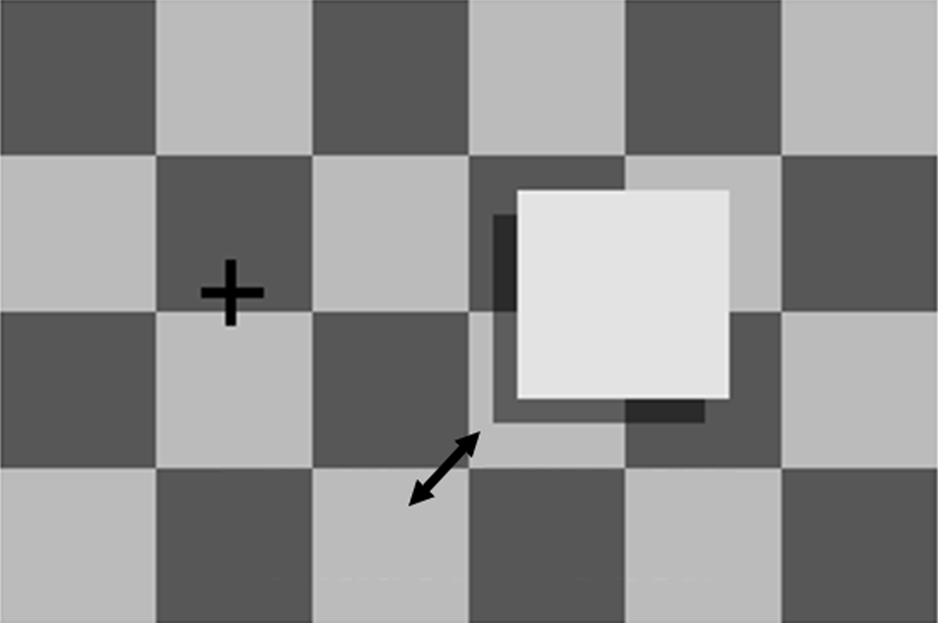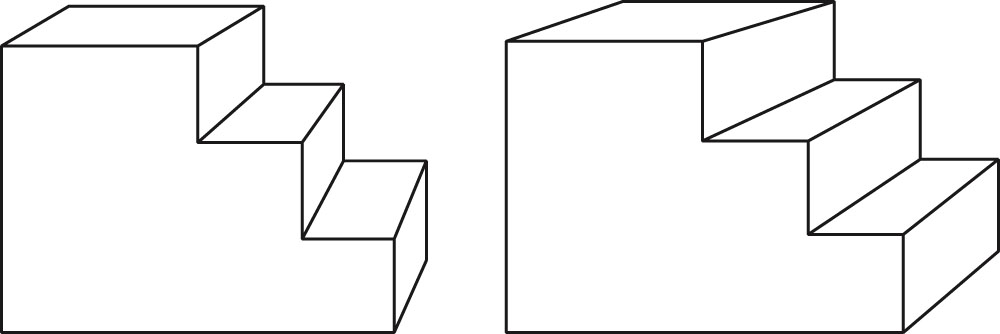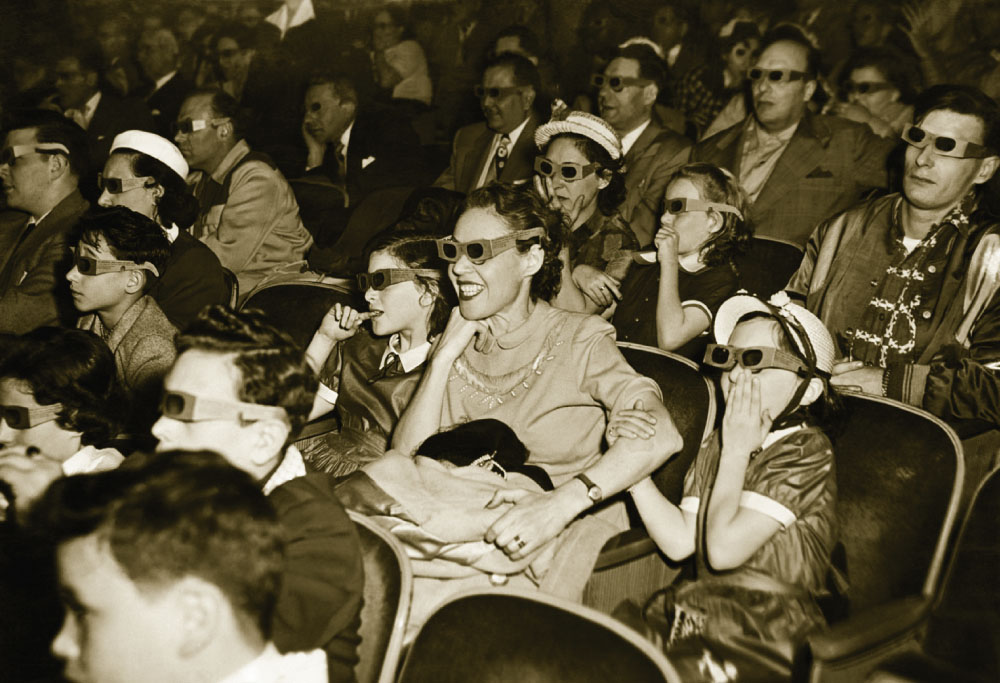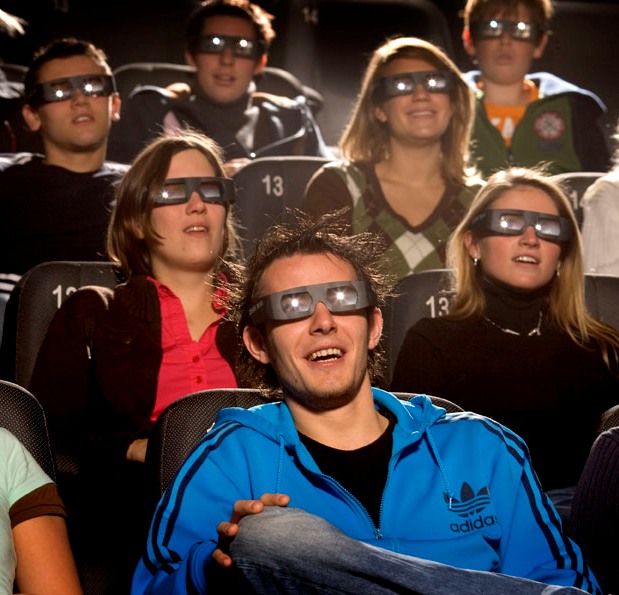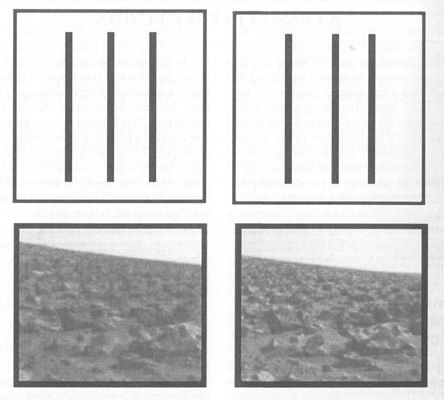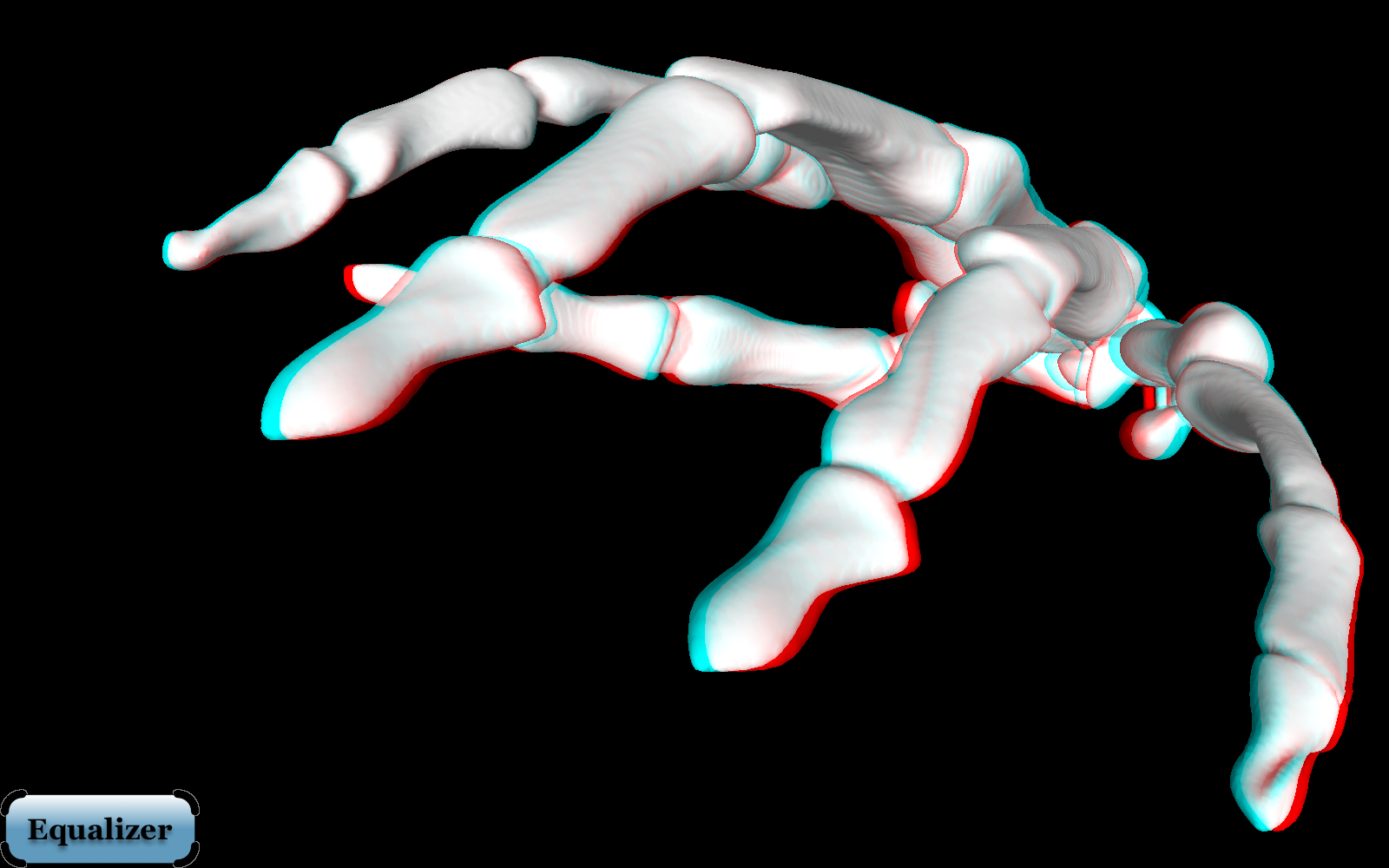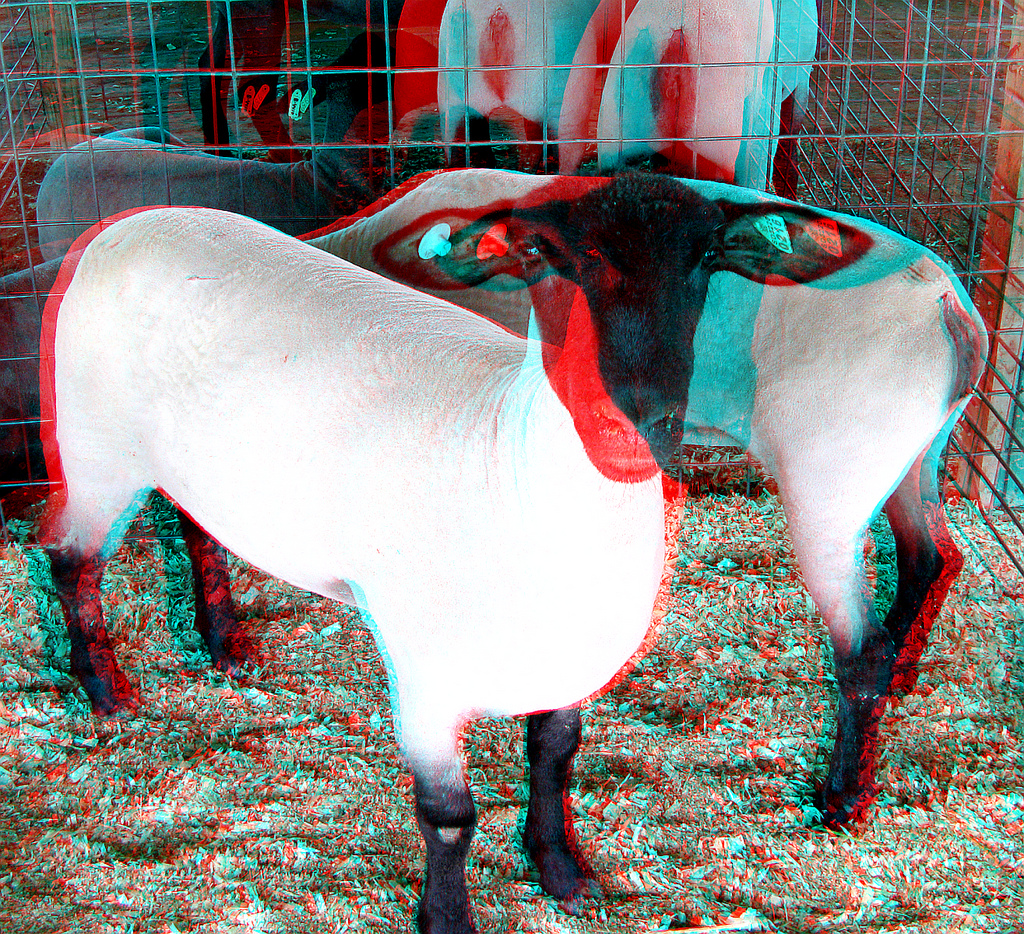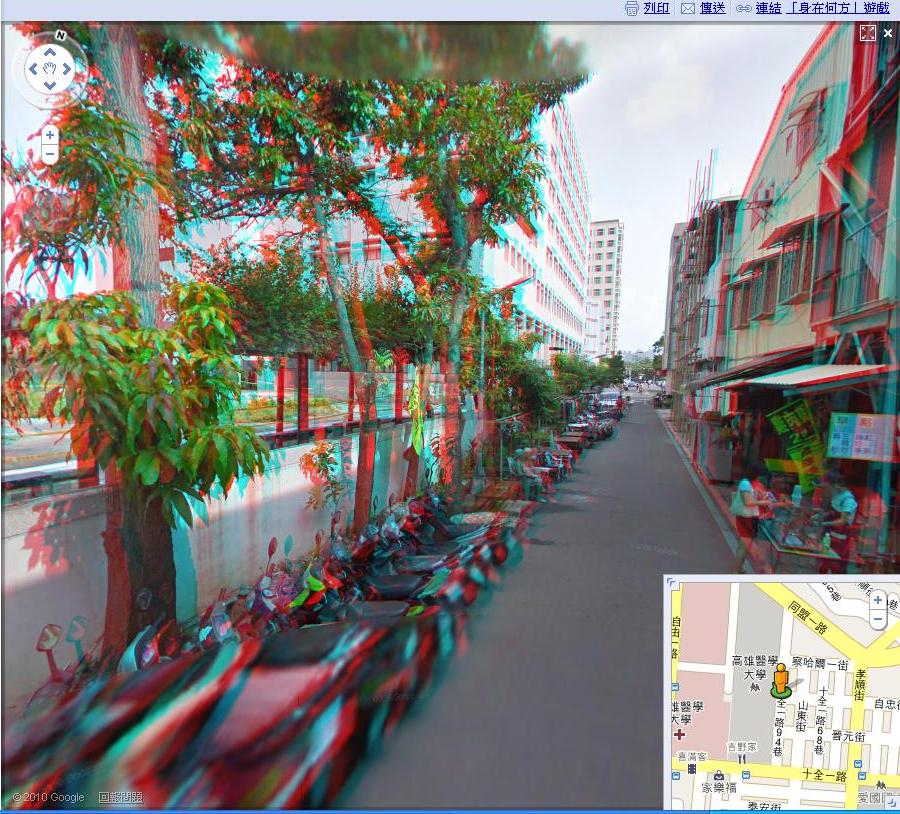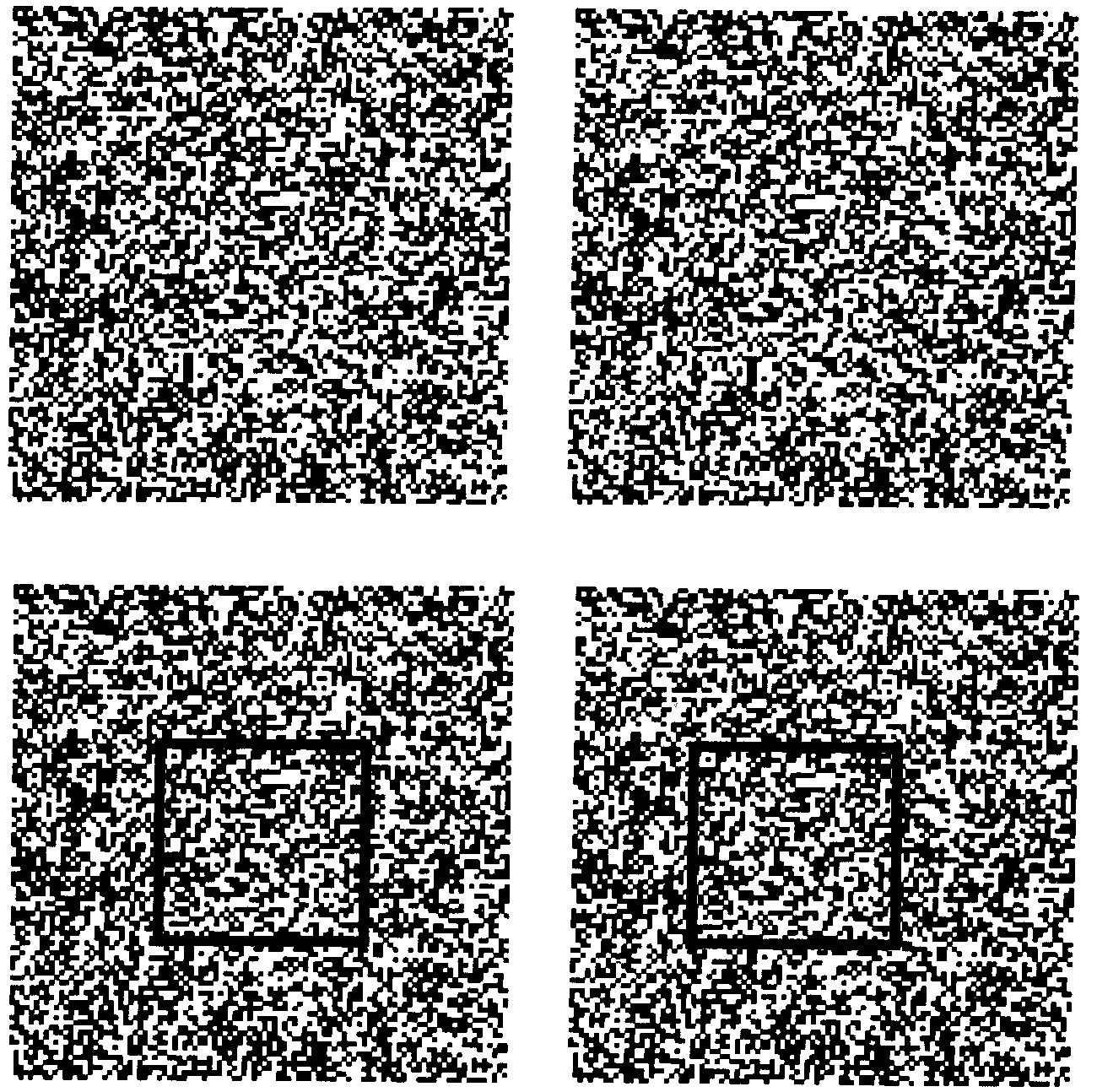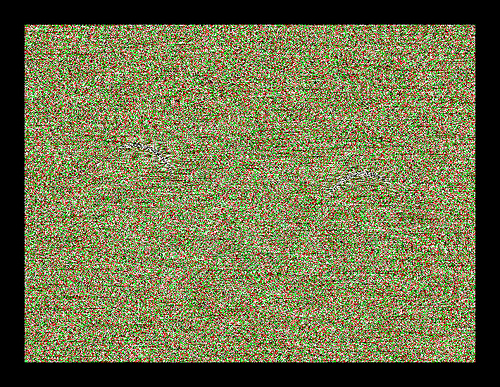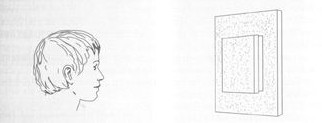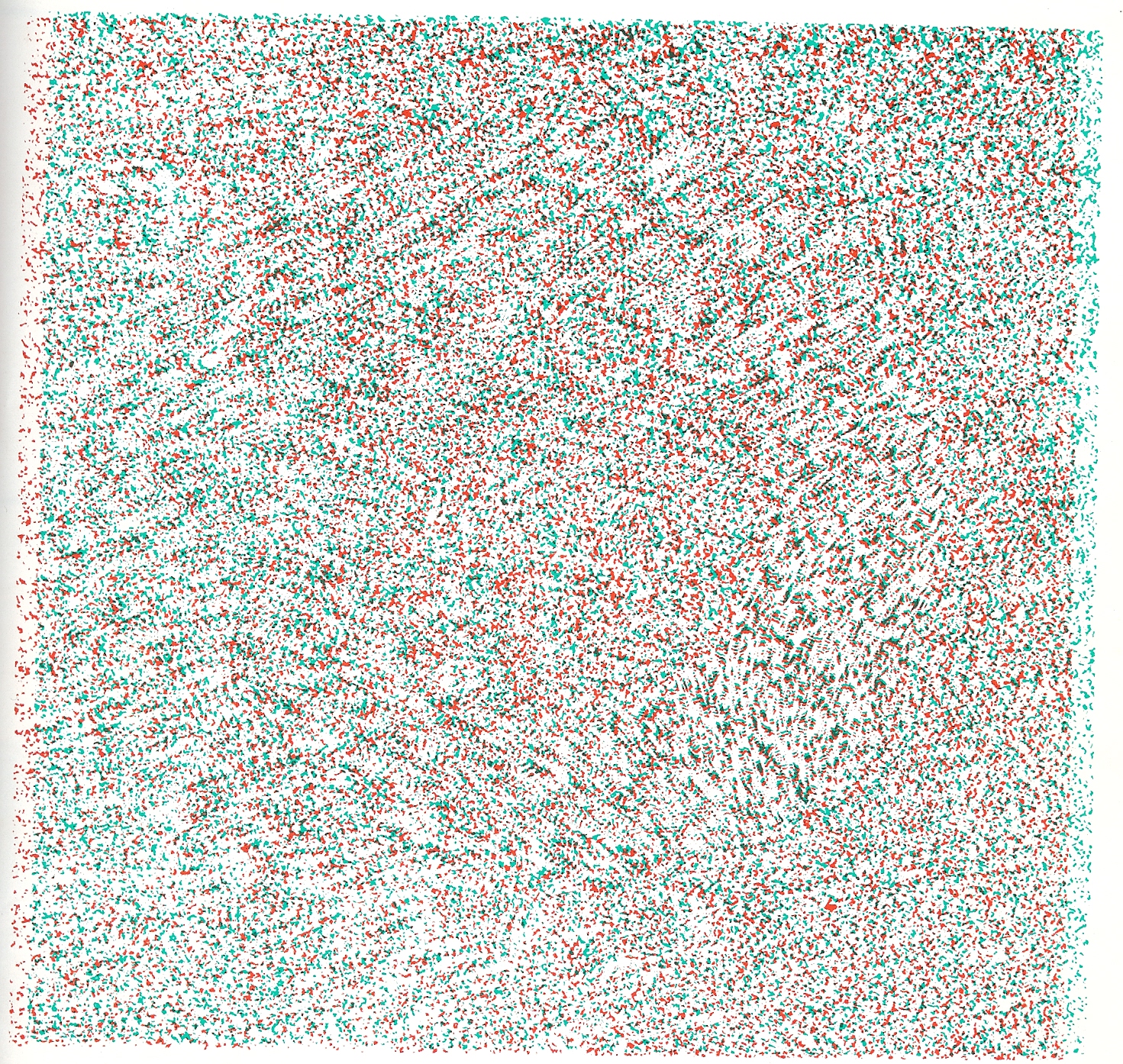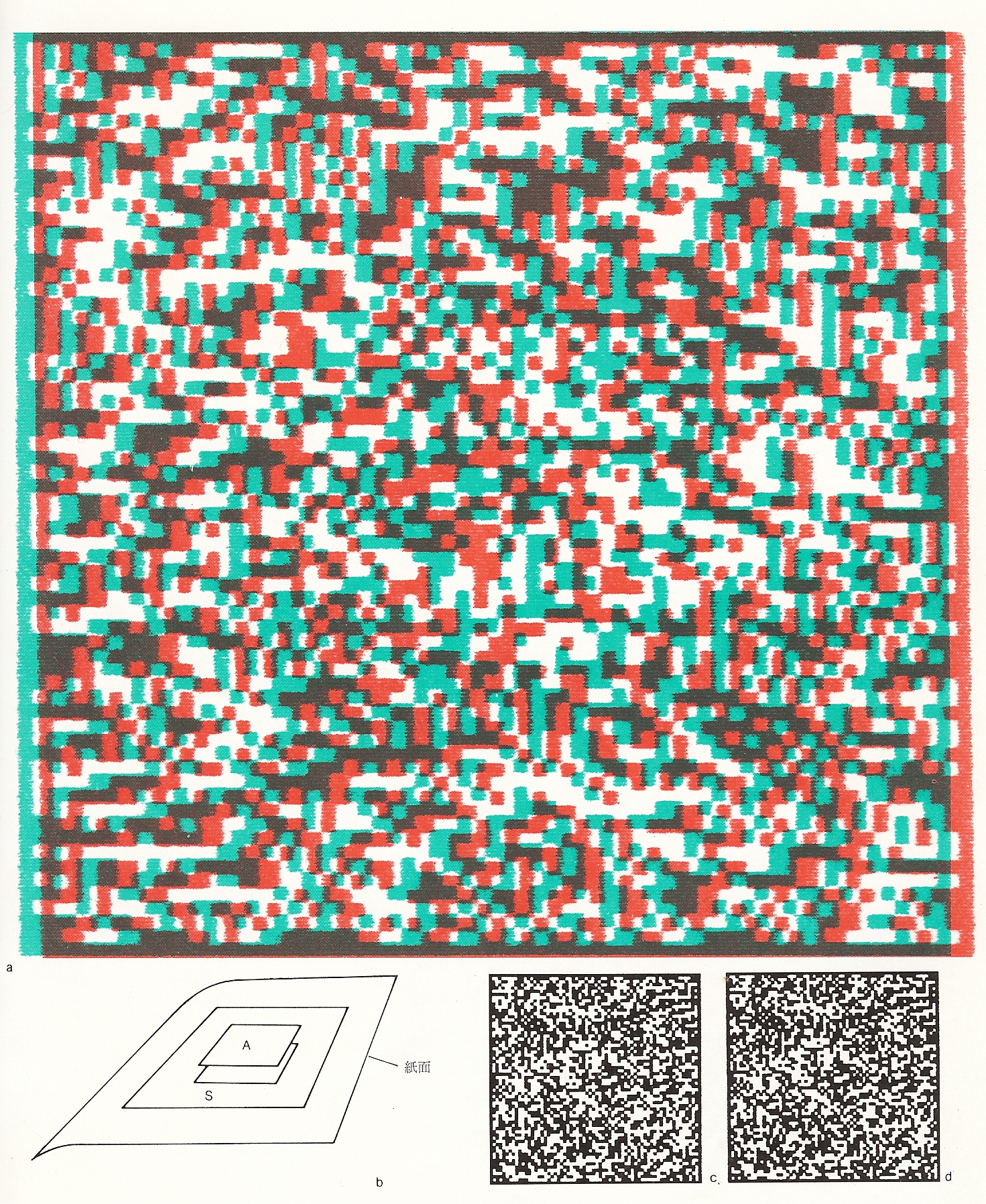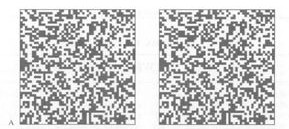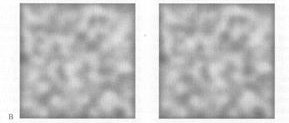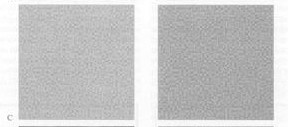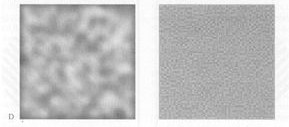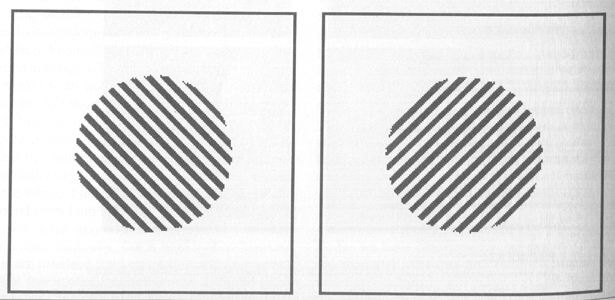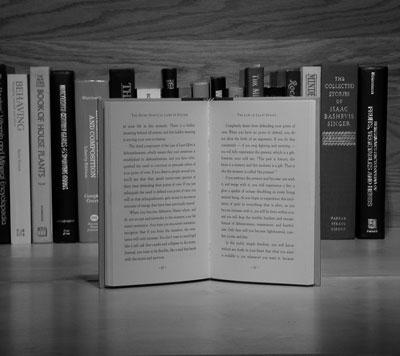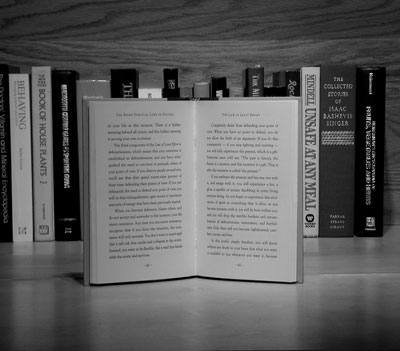第十講:Perceiving Depth and Size
出自KMU Wiki
(修訂版本間差異)
| 在2011年11月24日 (四) 21:12所做的修訂版本 (編輯) Fivesix27 (對話 | 貢獻) (→Vergence) ←上一個 |
當前修訂版本 (2014年1月15日 (三) 10:39) (編輯) (撤銷) Woody (對話 | 貢獻) (→Infant depth perception) |
||
| (16個中途的修訂版本沒有顯示。) | |||
| 第1行: | 第1行: | ||
| - | + | == 深度知覺的困難 == | |
| - | + | *參照第228頁 figure 10.1 | |
| - | + | ||
| - | + | == 文藝復興 == | |
| *Albrecht Dürer (阿爾布雷希特·杜勒1471-1528) | *Albrecht Dürer (阿爾布雷希特·杜勒1471-1528) | ||
| - | + | [[Image:10.1.jpg]] | |
| + | === 文藝復興過程 === | ||
| *將眼見的呈現在畫中 | *將眼見的呈現在畫中 | ||
| *希臘、羅馬時期已到達相當不錯的情況 | *希臘、羅馬時期已到達相當不錯的情況 | ||
| 第12行: | 第13行: | ||
| **如前述的Albrecht Dürer | **如前述的Albrecht Dürer | ||
| **及Leonardo da Vinci (李奧納多·達文西) | **及Leonardo da Vinci (李奧納多·達文西) | ||
| - | + | === pre-Renaissance(前文藝復興期) === | |
| *不完全的透視 | *不完全的透視 | ||
| - | + | [[Image:10.2.jpg]] | |
| + | [[Image:10.3.png]] | ||
| *Albrecht Windows | *Albrecht Windows | ||
| - | + | **Leonardo作法 | |
| + | [[Image:10.4.jpg]] | ||
| *Albrecht Dürer | *Albrecht Dürer | ||
| + | [[Image:10.5.jpg]][[Image:10.6.jpg]] | ||
| **北方文藝復興重要人物 | **北方文藝復興重要人物 | ||
| - | + | === Renaissance(文藝復興) === | |
| *地區 | *地區 | ||
| **以義大利為中心 | **以義大利為中心 | ||
| 第29行: | 第33行: | ||
| **科學 | **科學 | ||
| - | + | ===Leonard da Vinci=== | |
| - | + | [[Image:10.7.jpg]][[Image:10.8.jpg]][[Image:10.9.jpg]] | |
| - | + | *義大利 | |
| - | + | **科學家 | |
| + | **藝術家 | ||
| + | *最後的晚餐 | ||
| + | [[Image:10.10.png]] | ||
| - | + | == depth cues (深度線索) == | |
| *各類深度線索 | *各類深度線索 | ||
| + | [[Image:10.11.jpg]] | ||
| - | + | === Vergence === | |
| - | + | *參照第229頁 figure 10.2 | |
| - | + | ===單眼線索=== | |
| - | + | *圖畫線索 | |
| + | [[Image:10.12.jpg]] | ||
| - | * | + | ===Relative Height=== |
| - | + | *地平線以上與以下 | |
| + | *參照第229頁 figure 10.3 | ||
| + | ===Perspective Convergence=== | ||
| + | *又稱直線透視 | ||
| + | *參照第230頁 figure 10.4 | ||
| + | ===Familiar size=== | ||
| + | *參照第230頁 figure 10.5 | ||
| - | + | ===Atmospheric perspective=== | |
| - | + | *空氣透視 | |
| + | *參照第231頁 figure 10.6 | ||
| - | + | ===Texture gradient=== | |
| **質地遞變 | **質地遞變 | ||
| + | *參照第231頁 figure 10.7 | ||
| - | *shading | + | ===Shadows=== |
| - | + | *光線與陰影 | |
| - | ** | + | *參照第231頁 figure 10.8 |
| - | *** | + | ===shading=== |
| + | *shading and texture | ||
| + | [[Image:10.15.jpg]] | ||
| + | **depth movement | ||
| + | [[Image:10.16.jpg]] | ||
| + | ===光線方向=== | ||
| + | *照相時機 | ||
| + | *參照第232頁 figure 10.9 | ||
| + | ===Motion paralla=== | ||
| + | *參照第233頁 figure 10.10 | ||
| - | * | + | ===Deletion and Accretion=== |
| - | + | *阻檔與解除 | |
| + | *參照第233頁 figure 10.11 | ||
| - | + | ===Occlusion=== | |
| - | + | ||
| - | + | ||
| - | + | ||
| **重疊(近與遠) | **重疊(近與遠) | ||
| + | [[Image:10.19.jpg]][[Image:10.20.jpg]] | ||
| + | ===Range of Depth Cues=== | ||
| + | *各線索有效性不同 | ||
| + | *參照第233頁 table 10.1 | ||
| - | + | == 雙眼位置 == | |
| - | + | *參照第234頁 figure 10.12 | |
| *閉上右眼,手指放在遠方物體上。手指不動換右眼來看 | *閉上右眼,手指放在遠方物體上。手指不動換右眼來看 | ||
| - | + | ===2D vs 3D=== | |
| - | *Corresponding points | + | 影像的形成 |
| - | + | *參照第235頁 figure 10.13 | |
| - | + | ===Corresponding points=== | |
| - | + | *參照第236頁 figure 10.14 | |
| - | + | ===Horopter=== | |
| - | + | *參照第236頁 figure 10.15 | |
| + | ===binocular disparity=== | ||
| + | *參照第237頁 figure 10.16 | ||
| + | *參照第238頁 figure 10.17 | ||
| - | + | == Stereoscope(立體鏡) == | |
| *Wheatstone 19世紀發明 | *Wheatstone 19世紀發明 | ||
| 第89行: | 第120行: | ||
| === 3D圖形 === | === 3D圖形 === | ||
| *左、右眼圖 | *左、右眼圖 | ||
| + | *參照第239頁 figure 10.19 | ||
| *簡易實體鏡 | *簡易實體鏡 | ||
| + | [[Image:10.23.jpg]] | ||
| + | |||
| + | ===實體鏡=== | ||
| + | *參照第239頁 figure 10.20 | ||
| + | *三種類型 | ||
| *3D movies 古 | *3D movies 古 | ||
| + | [[Image:10.24.jpg]] | ||
| *3D movies 新 | *3D movies 新 | ||
| - | ** | + | **帶動者 Avatar |
| - | + | [[Image:10.25.jpg]][[Image:0.26.jpg]] | |
| - | + | ||
| + | === RDS (Random-dot Stereogram) === | ||
| + | *參照第240頁 figure 10.21 | ||
| *Autostereogram | *Autostereogram | ||
| **“Magic Eye”box 8.2 | **“Magic Eye”box 8.2 | ||
| + | [[Image:10.27.jpg]] | ||
| *Anaglyph(紅綠立體圖) | *Anaglyph(紅綠立體圖) | ||
| **要帶紅綠眼鏡(左眼紅、右眼綠) | **要帶紅綠眼鏡(左眼紅、右眼綠) | ||
| + | [[Image:10.28.png]][[Image:10.29.jpg]] | ||
| *Google 街景也可以看3D | *Google 街景也可以看3D | ||
| **拉下街景小人後,街景上按右鍵 | **拉下街景小人後,街景上按右鍵 | ||
| ***選3D mode on | ***選3D mode on | ||
| + | [[Image:10.30.jpg]] | ||
| *random-dot stereogram(隨機點立體圖) | *random-dot stereogram(隨機點立體圖) | ||
| **Bela Julesz (1959) | **Bela Julesz (1959) | ||
| + | [[Image:10.31.jpg]] | ||
| + | *RDS anaglyph | ||
| + | [[Image:10.32.jpg]] | ||
| ***受試者看到的 | ***受試者看到的 | ||
| + | [[Image:10.33.jpg]] | ||
| *RDS anaglyph | *RDS anaglyph | ||
| **要戴紅綠眼鏡( 接下來兩張要左綠、右紅) | **要戴紅綠眼鏡( 接下來兩張要左綠、右紅) | ||
| + | [[Image:10.34.jpg]][[Image:10.35.jpg]] | ||
| - | + | === SF & stereopsis === | |
| *RDS原空間頻率 | *RDS原空間頻率 | ||
| + | [[Image:10.36.jpg]] | ||
| *low spatial frequency | *low spatial frequency | ||
| + | [[Image:10.37.jpg]] | ||
| *high spatial frequnecy | *high spatial frequnecy | ||
| + | [[Image:10.38.jpg]] | ||
| *left=low/right=high -> rivalry | *left=low/right=high -> rivalry | ||
| + | [[Image:10.39.jpg]] | ||
| === binocular rivalry(雙眼競爭) === | === binocular rivalry(雙眼競爭) === | ||
| *雙眼競爭 box8.3 | *雙眼競爭 box8.3 | ||
| + | [[Image:10.40.jpg]] | ||
| + | ====da Vinci stereopsis(達文西立體圖)==== | ||
| + | **amodal completion(非形式補整) | ||
| + | [[Image:10.41.jpg]][[Image:10.42.jpg]] | ||
| - | + | == Neural basis == | |
| *disparity-selective cells(像差偵測細胞) | *disparity-selective cells(像差偵測細胞) | ||
| *Stereoblindness(立體盲) | *Stereoblindness(立體盲) | ||
| 第125行: | 第180行: | ||
| **convergence insufficiency(輻奏不協調) | **convergence insufficiency(輻奏不協調) | ||
| - | + | ===disparity tuning curve === | |
| - | + | *參照第241頁 figure 10.22 | |
| - | + | ===對gradient反應之細胞=== | |
| - | + | ||
| - | === | + | |
| - | + | ||
| - | + | ||
| - | * | + | |
| - | + | ||
| - | + | ||
| - | + | ||
| - | + | ||
| - | + | ||
| - | + | ||
| - | + | ||
| - | + | ||
| - | + | ||
| *刺激大腦可以使深度知覺改變 | *刺激大腦可以使深度知覺改變 | ||
| - | * | + | *參照第242頁 figure 10.24 |
| - | + | ||
| + | ===知覺歷程中之關係=== | ||
| + | *刺激、生理、知覺 | ||
| + | *參照第242頁 figure 10.23 | ||
| === Whiteout === | === Whiteout === | ||
| - | + | *參照第243頁 figure 10.25 | |
| ==== Holway and Boring (1941) ==== | ==== Holway and Boring (1941) ==== | ||
| - | + | *參照第243頁 figure 10.26 | |
| - | + | ||
| === Visual angle === | === Visual angle === | ||
| - | + | *參照第244頁 figure 10.27 | |
| 請回去想一想視角怎麼算? | 請回去想一想視角怎麼算? | ||
| *大致大小 | *大致大小 | ||
| - | + | *參照第244頁 figure 10.28 | |
| *單眼觀察 | *單眼觀察 | ||
| **遠近的trick | **遠近的trick | ||
| - | * | + | *參照第245頁 figure 10.29 |
| - | + | ====Holway and Boring (1941)結果==== | |
| + | *參照第245頁 figure 10.30 | ||
| *Visual angle again :p | *Visual angle again :p | ||
| - | + | *參照第246頁 figure 10.31 | |
| + | ==Size constancy== | ||
| + | *Size distance invariance | ||
| + | *參照第246頁 figure 10.32 | ||
| === Emmert's law === | === Emmert's law === | ||
| - | + | *參照第247頁 figure 10.33 | |
| *size-distance scaling S = K (R X D) | *size-distance scaling S = K (R X D) | ||
| *familiar size | *familiar size | ||
| - | + | *參照第248頁 figure 10.34 | |
| *texture gradient and size | *texture gradient and size | ||
| - | + | *參照第248頁 figure 10.35 | |
| === Muller-Lyer illusion === | === Muller-Lyer illusion === | ||
| - | + | *參照第249頁 figure 10.36 | |
| *Gregory (1966)的解釋 | *Gregory (1966)的解釋 | ||
| **以大小恆常來解釋 | **以大小恆常來解釋 | ||
| + | *參照第249頁 figure 10.37 | ||
| *否證之一 | *否證之一 | ||
| - | + | *參照第250頁 figure 10.38 | |
| *否證之二 | *否證之二 | ||
| - | + | *參照第250頁 figure 10.39 | |
| - | + | ===Conflicting Cues Theory=== | |
| + | *Day (1989, 1990) | ||
| + | *參照第250頁 figure 10.40 | ||
| === Ponzo illusion === | === Ponzo illusion === | ||
| *可以用大小與距離關係來解釋 | *可以用大小與距離關係來解釋 | ||
| - | + | *參照第251頁 figure 10.41 | |
| ==== Ames room ==== | ==== Ames room ==== | ||
| - | + | *參照第251頁 figure 10.42 | |
| *Ames room 解釋 | *Ames room 解釋 | ||
| - | + | *參照第251頁 figure 10.43 | |
| ==== moon illusion ==== | ==== moon illusion ==== | ||
| - | + | *參照第252頁 figure 10.44 | |
| *moon illusion之一種解釋 | *moon illusion之一種解釋 | ||
| - | + | *參照第252頁 figure 10.45 | |
| === 行動與距離 === | === 行動與距離 === | ||
| P.254 Figure10.46 | P.254 Figure10.46 | ||
| + | |||
| + | ==Across species== | ||
| + | |||
| + | ===Frontal / Lateral eye=== | ||
| + | *例如貓、兔 | ||
| + | *參照第253頁 figure 10.46 | ||
| + | ===Sonar in Bat=== | ||
| + | *參照第254頁 figure 10.47 | ||
| + | |||
| + | ==Infant depth perception== | ||
| + | *Fox et.al. (1980) 利用 RDS 判斷視線 | ||
| + | *參照第255頁 figure 10.48 | ||
| + | ===Familiar size in infant=== | ||
| + | *Granrud, Haake, and Yonas (1985) | ||
| + | **利用 preferential reaching | ||
| + | *參照第255頁 figure 10.49 | ||
| + | ===Shadows=== | ||
| + | *Yonas and Granrud (2006) | ||
| + | *參照第256頁 figure 10.50 | ||
| + | 返回[[知覺心理學]] | ||
當前修訂版本
目錄 |
[編輯] 深度知覺的困難
- 參照第228頁 figure 10.1
[編輯] 文藝復興
- Albrecht Dürer (阿爾布雷希特·杜勒1471-1528)
[編輯] 文藝復興過程
- 將眼見的呈現在畫中
- 希臘、羅馬時期已到達相當不錯的情況
- 中世紀曾經衰退
- 在前文藝復興年代開始努力恢復
- 文藝復興時確立
- 如前述的Albrecht Dürer
- 及Leonardo da Vinci (李奧納多·達文西)
[編輯] pre-Renaissance(前文藝復興期)
- 不完全的透視
- Albrecht Windows
- Leonardo作法
- Albrecht Dürer
- 北方文藝復興重要人物
[編輯] Renaissance(文藝復興)
- 地區
- 以義大利為中心
- 延伸至北方(法蘭西、神聖羅馬帝國...)
- 以及英格蘭
- 影響範圍
- 文學
- 藝術
- 科學
[編輯] Leonard da Vinci
- 義大利
- 科學家
- 藝術家
- 最後的晚餐
[編輯] depth cues (深度線索)
- 各類深度線索
[編輯] Vergence
- 參照第229頁 figure 10.2
[編輯] 單眼線索
- 圖畫線索
[編輯] Relative Height
- 地平線以上與以下
- 參照第229頁 figure 10.3
[編輯] Perspective Convergence
- 又稱直線透視
- 參照第230頁 figure 10.4
[編輯] Familiar size
- 參照第230頁 figure 10.5
[編輯] Atmospheric perspective
- 空氣透視
- 參照第231頁 figure 10.6
[編輯] Texture gradient
- 質地遞變
- 參照第231頁 figure 10.7
[編輯] Shadows
- 光線與陰影
- 參照第231頁 figure 10.8
[編輯] shading
- shading and texture
- depth movement
[編輯] 光線方向
- 照相時機
- 參照第232頁 figure 10.9
[編輯] Motion paralla
- 參照第233頁 figure 10.10
[編輯] Deletion and Accretion
- 阻檔與解除
- 參照第233頁 figure 10.11
[編輯] Occlusion
- 重疊(近與遠)
[編輯] Range of Depth Cues
- 各線索有效性不同
- 參照第233頁 table 10.1
[編輯] 雙眼位置
- 參照第234頁 figure 10.12
- 閉上右眼,手指放在遠方物體上。手指不動換右眼來看
[編輯] 2D vs 3D
影像的形成
- 參照第235頁 figure 10.13
[編輯] Corresponding points
- 參照第236頁 figure 10.14
[編輯] Horopter
- 參照第236頁 figure 10.15
[編輯] binocular disparity
- 參照第237頁 figure 10.16
- 參照第238頁 figure 10.17
[編輯] Stereoscope(立體鏡)
- Wheatstone 19世紀發明
- 使用鏡子
- ViewMaster
- 使用菱鏡及透鏡
- 紅綠濾鏡
- 偏光鏡
- Autostereogram(單張式立體圖)
[編輯] 3D圖形
- 左、右眼圖
- 參照第239頁 figure 10.19
- 簡易實體鏡
[編輯] 實體鏡
- 參照第239頁 figure 10.20
- 三種類型
- 3D movies 古
- 3D movies 新
- 帶動者 Avatar
[編輯] RDS (Random-dot Stereogram)
- 參照第240頁 figure 10.21
- Autostereogram
- “Magic Eye”box 8.2
- Anaglyph(紅綠立體圖)
- 要帶紅綠眼鏡(左眼紅、右眼綠)
- Google 街景也可以看3D
- 拉下街景小人後,街景上按右鍵
- 選3D mode on
- 拉下街景小人後,街景上按右鍵
- random-dot stereogram(隨機點立體圖)
- Bela Julesz (1959)
- RDS anaglyph
- 受試者看到的
- RDS anaglyph
- 要戴紅綠眼鏡( 接下來兩張要左綠、右紅)
[編輯] SF & stereopsis
- RDS原空間頻率
- low spatial frequency
- high spatial frequnecy
- left=low/right=high -> rivalry
[編輯] binocular rivalry(雙眼競爭)
- 雙眼競爭 box8.3
[編輯] da Vinci stereopsis(達文西立體圖)
- amodal completion(非形式補整)
[編輯] Neural basis
- disparity-selective cells(像差偵測細胞)
- Stereoblindness(立體盲)
- strabismus (斜視)
- diplopia (複視)
- convergence insufficiency(輻奏不協調)
[編輯] disparity tuning curve
- 參照第241頁 figure 10.22
[編輯] 對gradient反應之細胞
- 刺激大腦可以使深度知覺改變
- 參照第242頁 figure 10.24
[編輯] 知覺歷程中之關係
- 刺激、生理、知覺
- 參照第242頁 figure 10.23
[編輯] Whiteout
- 參照第243頁 figure 10.25
[編輯] Holway and Boring (1941)
- 參照第243頁 figure 10.26
[編輯] Visual angle
- 參照第244頁 figure 10.27
請回去想一想視角怎麼算?
- 大致大小
- 參照第244頁 figure 10.28
- 單眼觀察
- 遠近的trick
- 參照第245頁 figure 10.29
[編輯] Holway and Boring (1941)結果
- 參照第245頁 figure 10.30
- Visual angle again :p
- 參照第246頁 figure 10.31
[編輯] Size constancy
- Size distance invariance
- 參照第246頁 figure 10.32
[編輯] Emmert's law
- 參照第247頁 figure 10.33
- size-distance scaling S = K (R X D)
- familiar size
- 參照第248頁 figure 10.34
- texture gradient and size
- 參照第248頁 figure 10.35
[編輯] Muller-Lyer illusion
- 參照第249頁 figure 10.36
- Gregory (1966)的解釋
- 以大小恆常來解釋
- 參照第249頁 figure 10.37
- 否證之一
- 參照第250頁 figure 10.38
- 否證之二
- 參照第250頁 figure 10.39
[編輯] Conflicting Cues Theory
- Day (1989, 1990)
- 參照第250頁 figure 10.40
[編輯] Ponzo illusion
- 可以用大小與距離關係來解釋
- 參照第251頁 figure 10.41
[編輯] Ames room
- 參照第251頁 figure 10.42
- Ames room 解釋
- 參照第251頁 figure 10.43
[編輯] moon illusion
- 參照第252頁 figure 10.44
- moon illusion之一種解釋
- 參照第252頁 figure 10.45
[編輯] 行動與距離
P.254 Figure10.46
[編輯] Across species
[編輯] Frontal / Lateral eye
- 例如貓、兔
- 參照第253頁 figure 10.46
[編輯] Sonar in Bat
- 參照第254頁 figure 10.47
[編輯] Infant depth perception
- Fox et.al. (1980) 利用 RDS 判斷視線
- 參照第255頁 figure 10.48
[編輯] Familiar size in infant
- Granrud, Haake, and Yonas (1985)
- 利用 preferential reaching
- 參照第255頁 figure 10.49
[編輯] Shadows
- Yonas and Granrud (2006)
- 參照第256頁 figure 10.50
返回知覺心理學
